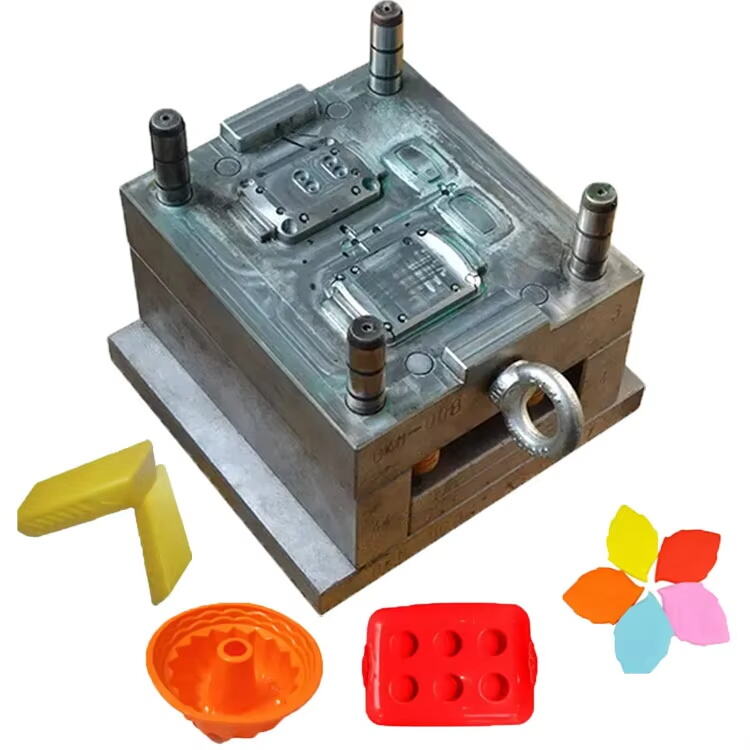Injection molding often produces flawed parts, but you can fix these issues with the right approach. Understanding the causes of common defects helps you make necessary adjustments. By addressing these problems, you improve product quality and reduce waste. A proactive mindset ensures smoother production and better results.
Burn Marks
Causes of Burn Marks
Burn marks appear as dark or blackened areas on the surface of injection molded parts. These marks often result from excessive heat or trapped air during the molding process. When the plastic material overheats, it degrades and burns, leaving visible marks. Trapped air or gas pockets can also cause burns when compressed and heated to high temperatures.
Improper venting in the mold is another common reason for burn marks. If the mold does not allow air to escape, the trapped air heats up and burns the material. High injection speeds or pressures can worsen the problem by increasing the temperature and trapping more air. Using the wrong material or one with low thermal stability can also contribute to this defect.
Solutions to Prevent Burn Marks
You can take several steps to prevent burn marks in your injection molded parts. Start by reducing the injection speed and pressure. Lowering these parameters minimizes the heat generated during the process. Adjusting the mold temperature can also help. Keeping the mold at an optimal temperature prevents the material from overheating.
Improving mold venting is crucial. Ensure the mold has proper vents to allow trapped air to escape. You can also use materials with higher thermal stability to reduce the risk of burning. Regularly maintaining the mold and cleaning vents will further prevent this issue. By addressing these factors, you can eliminate burn marks and improve the quality of your parts.
Sink Marks
Causes of Sink Marks
Sink marks are small depressions or indentations that appear on the surface of injection molded parts. These occur when the material inside the mold cools unevenly. Thicker sections of the part take longer to solidify, causing the surface to shrink inward. This uneven cooling often results from poor mold design or improper processing parameters.
Another common cause is insufficient packing pressure during the molding process. When the pressure is too low, the material fails to fill the mold completely, leaving voids or gaps that lead to sink marks. Using materials with high shrinkage rates can also increase the likelihood of this defect.
Solutions to Minimize Sink Marks
You can reduce sink marks by optimizing the mold design. Ensure the part has uniform wall thickness to promote even cooling. If the design requires thicker sections, use ribs or gussets to reinforce the structure without adding bulk. Increasing the packing pressure during the molding process helps fill the mold completely, reducing the risk of voids.
Adjusting the cooling time is another effective solution. Allowing the part to cool longer ensures the material solidifies evenly. You can also select materials with lower shrinkage rates to minimize the chances of sink marks. Regularly maintaining the mold and monitoring processing parameters will further help you address this issue. By implementing these strategies, you can improve the quality of your injection molded parts and avoid common defects like sink marks.
Weld Lines
Causes of Weld Lines
Weld lines form when two or more flow fronts of molten plastic meet but fail to bond properly. These lines often appear as visible seams or weak spots on the surface of the part. Uneven cooling or improper flow of material inside the mold usually causes this defect. When the material cools too quickly before merging, it creates a weak bond, resulting in weld lines.
Low injection speed or pressure can also lead to this issue. If the molten plastic flows too slowly, it loses heat and solidifies before the flow fronts can fuse. Poor mold design, such as sharp corners or thin walls, disrupts the material flow and increases the likelihood of weld lines. Using incompatible materials or additives further weakens the bond between flow fronts.
Solutions to Reduce Weld Lines
You can reduce weld lines by optimizing the injection molding process. Start by increasing the injection speed and pressure. This ensures the molten plastic flows quickly and maintains enough heat to bond properly. Raising the mold temperature also helps by slowing the cooling process, giving the material more time to fuse.
Improving the mold design is another effective solution. Avoid sharp corners or sudden changes in wall thickness that disrupt the material flow. Instead, use gradual transitions to promote smooth flow. Selecting compatible materials with similar melting points ensures better bonding. Regularly maintaining the mold and monitoring processing parameters will further minimize weld lines. By addressing these factors, you can eliminate this defect and improve the quality of your parts.
Short Shots
Causes of Short Shots
Short shots occur when the molten plastic fails to completely fill the mold cavity, leaving incomplete or missing sections in the final part. This defect often happens due to insufficient material injection. If the injection pressure is too low, the plastic cannot reach all areas of the mold.
Another common cause is poor material flow. Narrow gates, thin walls, or long flow paths can restrict the movement of molten plastic. These design issues make it harder for the material to fill the mold evenly. Low mold or material temperatures can also contribute to short shots. When the plastic cools too quickly, it solidifies before filling the entire cavity. Contaminants or moisture in the material may further disrupt the flow, leading to incomplete parts.
Solutions to Address Short Shots
You can address short shots by increasing the injection pressure. Higher pressure ensures the molten plastic reaches all areas of the mold. Raising the mold and material temperatures can also help. Warmer temperatures keep the plastic in a molten state longer, allowing it to flow more easily.
Improving the mold design is another effective solution. Widening gates or thickening walls can enhance material flow. Shortening flow paths reduces resistance, making it easier for the plastic to fill the cavity. Always use clean, dry materials to prevent contamination. Regularly inspect and maintain your equipment to ensure consistent performance. By implementing these strategies, you can eliminate short shots and improve the quality of your injection molded parts.
Flow Lines
Causes of Flow Lines
Flow lines appear as streaks, patterns, or lines on the surface of injection molded parts. These marks occur when the molten plastic flows unevenly through the mold. Variations in flow speed or cooling rates create visible lines where the material solidifies at different times.
Improper gate placement often causes this defect. If the gate is too small or poorly positioned, the plastic struggles to flow smoothly. Low injection speed or pressure can also contribute. When the material moves too slowly, it cools prematurely, leaving visible flow marks. Uneven mold temperatures further worsen the issue by causing inconsistent cooling. Using incompatible materials or additives may also disrupt the flow, increasing the likelihood of flow lines.
Solutions to Eliminate Flow Lines
You can eliminate flow lines by optimizing the injection molding process. Start by increasing the injection speed and pressure. Faster flow ensures the material fills the mold evenly before cooling. Adjusting the mold temperature also helps. Keeping the mold at a consistent temperature promotes uniform cooling and reduces visible marks.
Improving the mold design is another effective strategy. Position the gate in a way that allows smooth and direct material flow. Widening the gate can also help the plastic move more freely. Use compatible materials and avoid additives that disrupt the flow. Regularly inspect and maintain your equipment to ensure consistent performance. By addressing these factors, you can prevent flow lines and improve the quality of your parts. This approach also helps you tackle one of the common defects in injection molding.
You can address injection molding defects effectively with proper troubleshooting and process optimization. Regular maintenance of equipment ensures consistent performance. Handling materials carefully prevents contamination and improves results. Adjusting parameters like temperature and pressure enhances product quality. By resolving common defects, you reduce waste, improve efficiency, and deliver better products to your customers.

